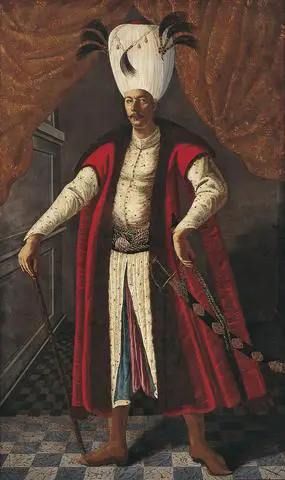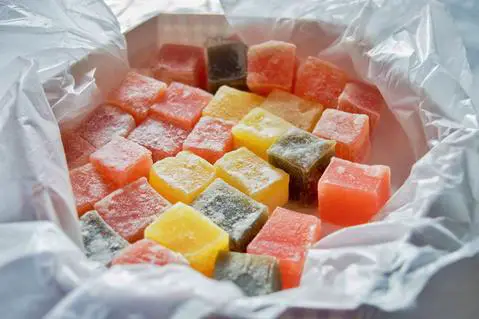Turkish Coffee: A Real Turkish Delight

Finely ground and brewed right into the water, this is Turkish coffee. A truly regal drink with a regal history. From being the drink of choice of the Sultan of the majestic Ottoman Empire, to being prepared by brides-to-be all over Turkey as a rite of passage. The Turkish coffee is certainly a delight. Some say it can even predict your fortune, too!
Ottoman Finery
Turkish coffee goes back to the 1500’s and there are two competing tales about its origin. The first says Turkish coffee was first introduced to the Ottoman governor of the Arab Gulf state, Yemen. If we were to follow this tale, the Yemeni coffee most likely came by way of Ethiopia (the birthplace of coffee!), and was presented to the Sultan of the Ottoman empire, the famous Suleiman the Magnificent.

The other story attributes the origins of Turkish coffee to two Syrian merchants in 1554. That story tells how the two Syrian entrepreneurs travelled to Istanbul and opened the first coffee shop in Tahtakale located in the neighborhood of Eminönü.
Whichever story is correct, or whichever you choose to believe, coffee made a big splash in Ottoman society. High ranking officials and the court of the sultan employed professional coffee masters known as Kahveci Usta. Over time the drink became more readily available for the general public and subsequently coffee houses or Kaveh kanes began opening up for business.
The Coffee Ban
In 1656, the coffee-hating vizier, Köprülü, issued a law making coffee and coffee houses illegal. The reasoning behind this controversial decision was that coffee houses (not unlike the cafes, coffeehouses and salons of Europe in the following centuries) became places where the public would discuss politics. Rarely, ideas and plots bordering on the treasonous would be discussed- a potential coup against the sultan, for example.
The ban issued harsh punishments and was met with equally harsh backlash and riots. Coffee had become ingrained with Turkish culture and to ban it was unpopular to say the least. Luckily for coffee enjoyers, the ban was lifted and a few years later coffee would actually be used as a cultural olive branch (or coffee…branch?).
Today, Turkish coffee is a Turkish cultural mainstay. Fortune tellers will even offer to read the coffee grounds left behind in your cup!
Spread to the West
One of the most famous examples of Turkish coffee being spread to the Western world was in 1657 and again in 1670, under the auspices of Sultan Mehmed IV and his ambassador. The sultan and then his ambassador again a few years shortly after, treated their European hosts with a lavish and fabulous presentations of coffee and other exotic goods. They also gifted them with coffee beans, and helped to establish French coffee culture.

Poland and Austria were other European nations who developed their coffee culture directly from the Ottomans. Poland through trade, and Austria, through warfare. After the battle of Vienna, the Austrian troops captured a few bags of coffee beans, from those captured bags, the first Viennese coffee house was born!
Making your own Turkish Coffee: What you need

Turkish coffee is an extraordinary way of preparing java. The following are the tools, equipment and accoutrements you will need.
⦁ Finely ground coffee, the type of bean is not crucial, but Arabica is favored
⦁ A cezve; a long handled pot made specifically for Turkish coffee. These pots are traditionally copper or brass, but other materials are also used today. This pot is also called an ibrek in other countries.
⦁ Traditionally, fine porcelain cups are used, but espresso demitasse or another type of mug should be sufficient
⦁ OPTIONAL: sugar and other sweets, like the Turkish Delight, which harmonizes perfectly with Turkish coffee

Making your own Turkish Coffee: How to Brew it

1: Make sure your coffee is ground very fine, the grounds will go right in the drink!
2: Put water and the grounds into the cezve, if you don’t have a cezve that’s okay! Just use another heat-safe vessel that you can put on a heat source. If you would like sugar in your coffee, add it in with the coffee grounds and water.
3: Place your cezve or other vessel on your chosen source of heat. As the water warms up stir it to help it foam up. The foam is an integral part of the drink. Also make sure to bring the water to a high but not boiling temperature, feel free to remove your vessel for a few seconds or turn the heat down if it’s boiling.
4: Continue to watch and control the heat or remove the pot until the foam has risen and then cooled 1-3 times.
5. Remove your cezve or vessel from the heat source for the final time and give the coffee about a minute to sit and let the sediments sink a bit.
6. Now to serve it! Make sure each cup gets some of the foam and feel free to even use a spoon or ladle to serve foam to each cup.
7. Let your coffee sit for about a minute to let the grounds sink.
8. Enjoy with a glass of water to cleanse the pallet and some sweets like Turkish Delights!
From here, feel free to talk politics or business deals like in the authentic Kaveh kanes! And certainly don’t forget to find a Falcı, or fortune teller to read your grounds and tell you your fortune!
Fit for a Sultan
The taste of the Turkish coffee can be rather strong, and so adding some sugar and cleansing the palate with water and sweets are a part of the tradition of enjoying this great beverage. It certainly can also be said that the unique and culturally rich way to enjoy Turkish tea is something to be explored. So whether you find yourself in Istanbul, or just have a very high quality bean grinder at your disposal, the Turkish coffee is certainly a delight.
